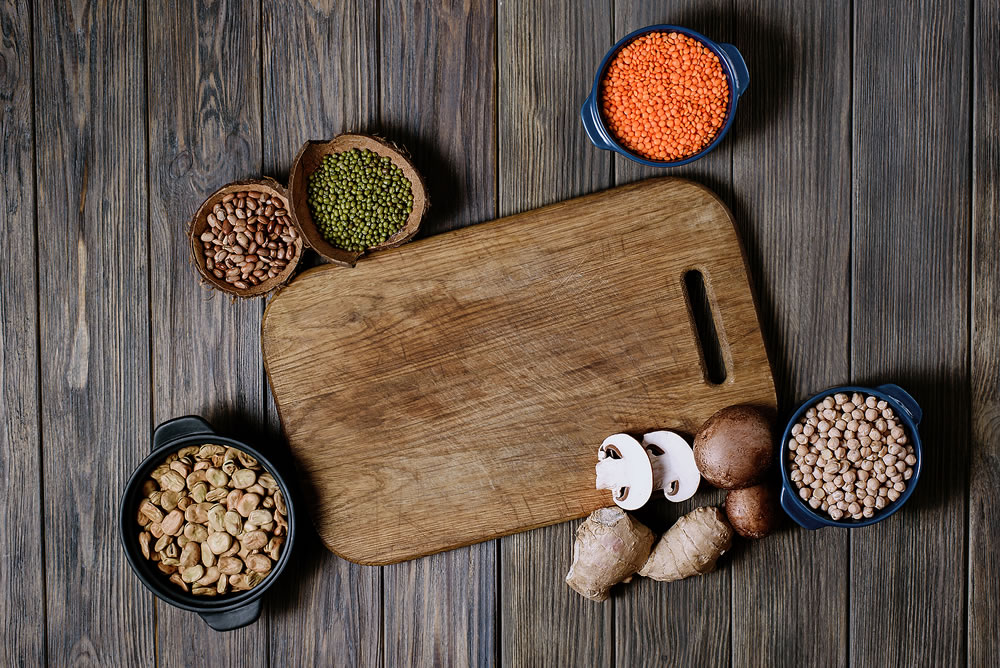One of the best ways to mitigate climate change is by reducing your meat intake. Some of the environmental effects that have been associated with meat production are pollution through fossil fuel usage, effluent waste, water and land consumption and animal methane. Not to mention, raising animals for food can cause immense animal suffering. As well as helping the environment, reduced excessive meat intake can lower blood cholesterol levels, reduce your chances of getting type 2 diabetes and improve your gut health. You can reduce your meat consumption by eating vegetarian and vegan meals, or simply reducing the amount of meat you eat in each meal.
We spoke to Donia Hilal, nutritionist at Personalised.co, who provides her top tips on how to safely reduce your meat intake.
Swap out red meat for healthier meats
Red meats (beef, pork and lamb) have more saturated trans fats than chicken, fish and plant-based proteins. Excessive consumption of saturated fats can raise blood cholesterol and increase incidence of heart disease. As well as this, red meat contributes more to environmental harm as the animals require more land and more greenhouse gasses are emitted. If you eat red meat multiple times a day- for example, breakfast sausages, a ham sandwich for lunch and steak for dinner – try cutting down your consumption to once a day. To do this, incorporate a reasonable amount of poultry, such as chicken and turkey, to your diet and experiment with a variety of seafood. Some easy swaps include replacing ground beef for ground turkey, pan-frying chicken burgers instead of grilling beef burgers and opting for tuna sandwiches instead of ham.

Learn about legumes
A legume is the fruit or seed of plants from the legume family. When used as dry grain, the seed is called a pulse. Common edible legumes include lentils, chickpeas, soybeans and peanuts which are great sources of protein, as well as being rich in minerals and fibre. Reducing your meat intake does not mean you have to go hungry or adapt to less protein in your diet. In fact, lentils, when combined with whole grains, have the same amount of protein as meat. Purchase a vegetarian cookbook for inspiration and commit to one meat-free day per week where you can substitute meat for legumes. If every family in the UK committed to this, studies have shown that it would be the equivalent of taking 16 million cars off the road. To preserve our planet and better our general health, learn about legumes and incorporate them into your diet.
Enjoy more vegetable varieties
Many meat-eaters have a preconception that a vegetarian or vegan diet means restricting yourself to a life of uninspiring salads. But vegetables are far from boring and they should take centre stage when planning a meal. Part of reducing your meat intake is changing the way you think about food and how you should eat. You are not limiting yourself as vegetables add a variety of new textures and flavours to your meals. From common varieties such as parsnips and pak choi, to varieties you might not have heard of such as jicama and cassava, there are plenty of options to try. If you really like your meat, try adding ‘meaty’ textures to your meals such as aubergines, jackfruit and mushrooms.

Stick to whole and unprocessed snacks
When we are feeling peckish, it is easy to gravitate towards the most accessible snack. Unfortunately, this tends to mean snacking on processed foods which have been modified from their natural state to increase shelf-life. Therefore, processed meats (beef jerky, pepperoni sticks, pork crackling etc) will have lost some fibre and nutrients, and gained sodium, sugar, chemicals and other unhealthy additives. Not only will eliminating processed meat snacks be better for your health, but you will be benefitting the environment too. Snack mindfully on healthier, unprocessed food options such as kale chips, celery with peanut butter, trail mix, hummus, sliced pears with ricotta cheese and Greek yoghurt and berries.
Reduce portion size by half
Everyone is different and has different circumstances, so going ‘cold turkey’ when reducing your meat intake is not always the most sensible or sustainable option. Instead, ease yourself into lowering your meat consumption and see what works for you. A simple way to begin this process is to cut your serving size of meat dishes in half. For instance, if you have a double cheeseburger, opt for a single and some plant-based sides. If you are having meatballs, count how many you have on your plate. Before each meal, think about how much meat you usually eat, and balance this with veggies. If you allow yourself time to adapt, then your new diet will get much easier over time.






















